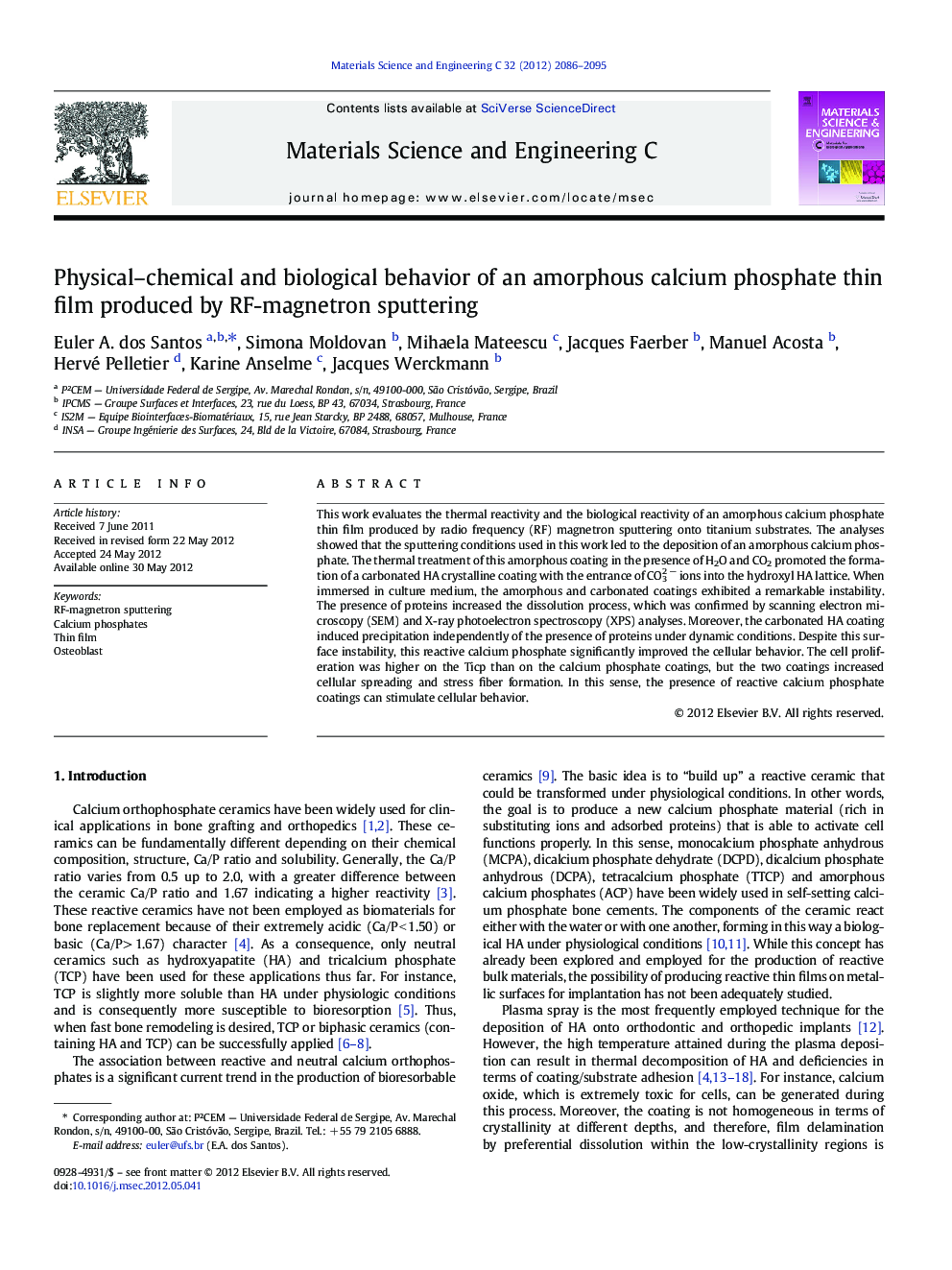| Article ID | Journal | Published Year | Pages | File Type |
|---|---|---|---|---|
| 1429367 | Materials Science and Engineering: C | 2012 | 10 Pages |
This work evaluates the thermal reactivity and the biological reactivity of an amorphous calcium phosphate thin film produced by radio frequency (RF) magnetron sputtering onto titanium substrates. The analyses showed that the sputtering conditions used in this work led to the deposition of an amorphous calcium phosphate. The thermal treatment of this amorphous coating in the presence of H2O and CO2 promoted the formation of a carbonated HA crystalline coating with the entrance of CO32 − ions into the hydroxyl HA lattice. When immersed in culture medium, the amorphous and carbonated coatings exhibited a remarkable instability. The presence of proteins increased the dissolution process, which was confirmed by scanning electron microscopy (SEM) and X-ray photoelectron spectroscopy (XPS) analyses. Moreover, the carbonated HA coating induced precipitation independently of the presence of proteins under dynamic conditions. Despite this surface instability, this reactive calcium phosphate significantly improved the cellular behavior. The cell proliferation was higher on the Ticp than on the calcium phosphate coatings, but the two coatings increased cellular spreading and stress fiber formation. In this sense, the presence of reactive calcium phosphate coatings can stimulate cellular behavior.
► Functionalization of Ti with reactive CaP thin film by RF-magnetron sputtering. ► De-hydroxylation facilitating the insertion of CO32 − into the HA lattice. ► High surface reactivity in the presence of culture medium. ► Cell behavior improved by the presence of reactive films.
